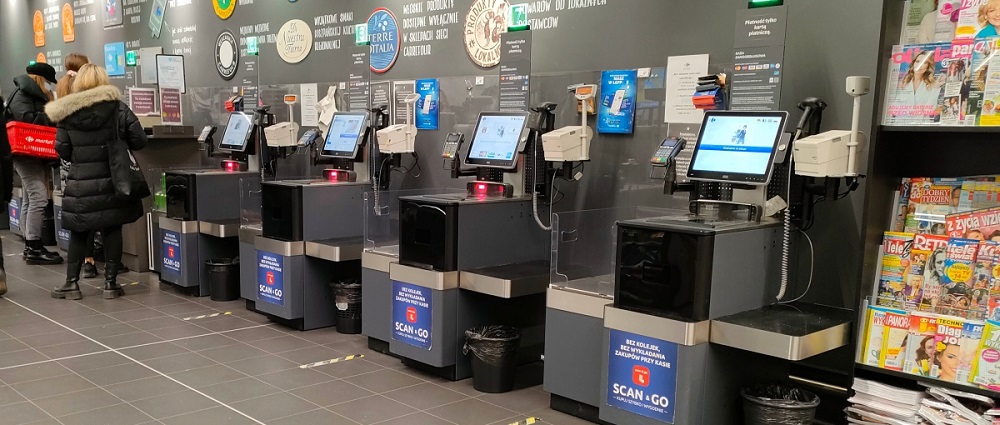
When customers hit the shops they have some idea in their mind – some kind of shopping list that may be longer or shorter. The basic goal of merchandising is to design the customer path to make purchasing longer and shopping baskets – fuller. You can achieve this by the right design and arrangement of the store’s space.
Impulse sales
The exposition of products on shelves plays a key role here. There are a bunch of POS materials (more on this topic you will find here). One of the goals of these features is to trigger impulse sales. Impulse sales (or rather impulse buying – from the client’s point of view) take place when a customer places in the shopping basket products which are not on their list. Usually, it refers to fast-moving consumer goods (FMCG) products with relatively low unit prices, like candies, or beverages. Globally, impulse buying is growing proportionally to people’s earnings. Another factor that increases impulse purchasing is the frequency of shopping. The more often customers go shopping, the more they buy that way. You can highlight impulse products on a shelf or free-standing displays. Places specially dedicated to impulse products are end caps (ends of shelves) and the checkout zone. A checkout zone is a place every customer sooner or later reaches. But it does not mean it is the end of the customer journey. Moreover, a very important and generating high-margin purchases phase has just begun…
Impulse sales in checkout zone
It does not matter how efficient is the team in your store, queues usually form in the checkout zone anyway. The customer flow slows down and the exposition of products on shelves became stronger. Products placed here are sweets, chewing gums, chocolate bars (more than a half of sales of these products is from the checkout zone), as well as condoms and OTC medications.
According to experts
FMCG sector representatives agree that the share of sales taking place in the checkout zone is significant. Zuzanna Ciurzyńska from Categories and Brands Development Department says that 30% of candy bars and wafers come from the cash desk area.
Janusz Idczak, Director of Category Planning, Trade Marketing & Sales Information in Kraft Foods Polska emphasizes that placing impulse products next to the cash desk results in a 20-50% sales increase.
Low unit price
Impulse products located next to the cash desk should not be expensive. Good old handbooks of merchandising say products sold here cannot be more expensive than 1-2 EUR (one coin rule). But you must remember that merchandising is a continuous experiment. When you have a look at the cash desk zone in any retail chain, you will find products that cost even 3-5 EUR.
Self-checkout zones
The first autonomous checkouts were introduced in the United States in the 1980s and 1990s. In the beginning, they were some kind of curiosity. Demand for these devices increased in these markets, where problems with the availability of employees occurred. Only one worker may supervise the whole self-checkout zone.
Another key factor that made automatic cash desks more common was the Covid-19 pandemic. Restrictions regarding the number of people allowed in stores, sanitary rules (self-checked goods may seem more secure for some customers), emphasis on cashless and touchless payments, and trouble with finding employees, forced retail stores to invest in automatic cash points. Some customers who originally were not happy to use such devices were slightly forced to do so.
Customers convenience benefited from this. Clients won faster service and quicker transactions. A new solution also partially responded to the lack of workforce.
Due to self-checkouts in stores, customers’ behavior has also changed. It was perceived as a feature for customers with less shopping, willing to exit the store as fast as possible. Entering the checkout zone meant the end of the shopping phase and going to the transaction phase.

The decline of impulse sales in self-checkout
Impulse purchases dropped due to the new model of buyer behavior. Some retail chains noticed several dozens of percent crunch in impulse sales. Clients lost their favorite opportunity to buy on impulse, due to the new design of the customer path. Some stores tried to arrange ad-hoc displays of impulse products next to the checkout, but it was often bad looking and messy.
These findings show us how substantial the potential of impulse sales is in the automatic cash desk area. Your shop may need completely new furniture solutions for the self-checkout zone.
Furniture triggering impulse purchasing in the self-checkout zone
The furniture system for the self-checkout zone should be flexible, which means suitable for various models of cash-desk devices. It is also supposed to be modular, which means it is easy to change the design and the arrangement. Of course, solid design and high-quality materials are a must! The design should be consistent with the visual identity of the store. It must remind the customers they are still shopping and has to welcome them to put more products in a cart. Furniture should give a chance to expose goods according to the art of merchandising and updated sales promotion policies of the shop.


